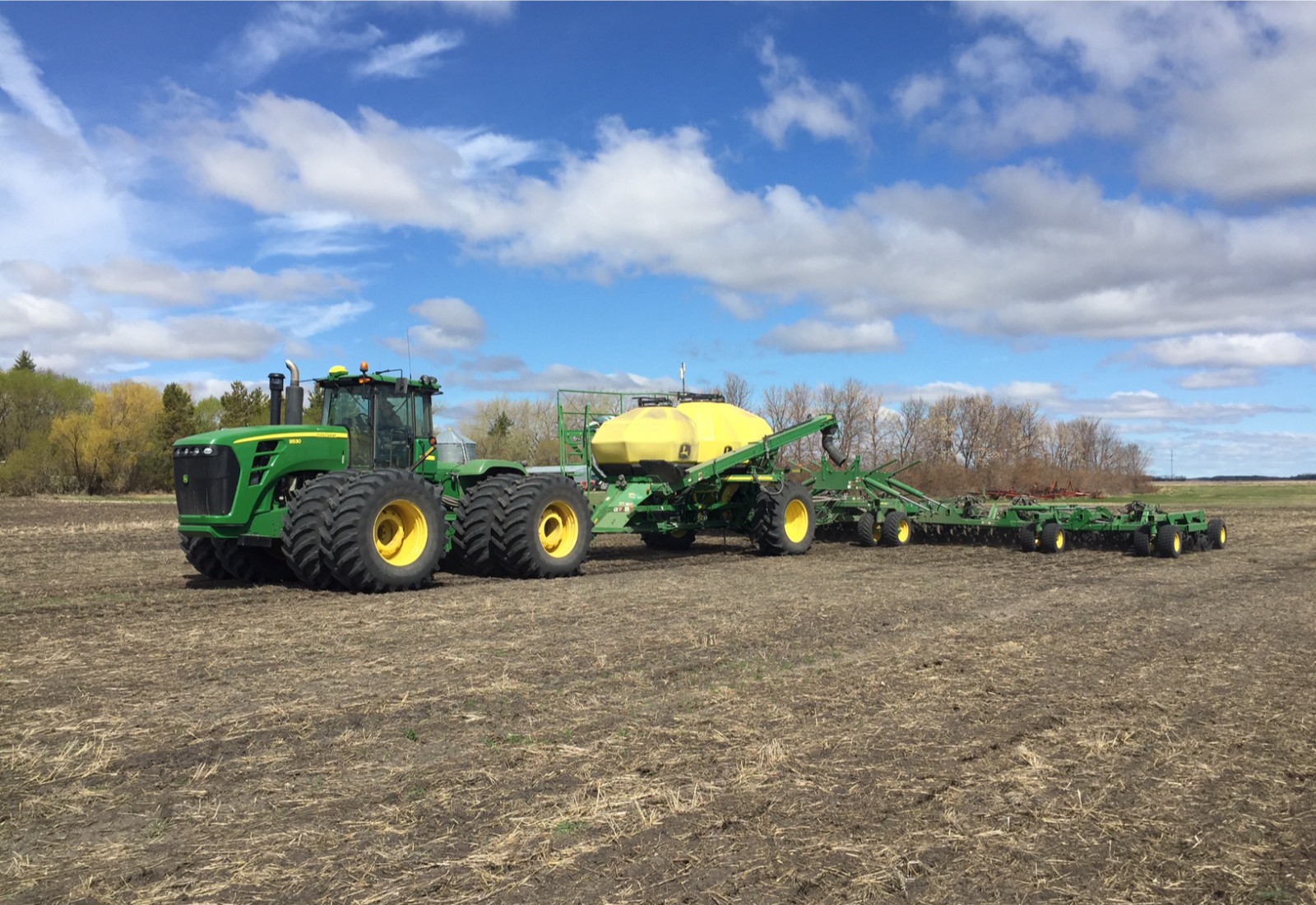Soybeans, The First Stages

By Ron Friesen
One to three weeks after seeding, soybean growers begin scouting their fields for early signs about the health of emerging seedlings.
If cotyledons are clean, hypocotyls are stretched out nicely, a dark green colour is starting to develop and there’s minimal wilting, chances are the seedlings are on their way to becoming healthy plants.
But if cotyledons are broken or missing, hypocotyls are swollen, brown spots are visible, and bare patches are starting to appear in the field, the plants are obviously struggling.
Unfortunately, at that point, there’s not much you can do about it.
“You cannot turn back time and there’s no cure. You can’t just apply something and make it go away,” says Harry Davies, Production Manager for NorthStar Genetics.
The thing to do, says Davies, is to follow certain procedures before and during planting for the best chance of having a healthy plant stand.
Of course, soybeans may get off to a poor start because of cold conditions or wet weather following planting, something over which growers have no control.
But Davies lists several important practices allowing soybeans to have the best possible opportunity for a good start.
Field preparation
Do everything you can to get the seedbed into good planting condition. Soybeans need warm clean soil for good emergence. Too much trash cover will keep the soil cool and inhibit early growth. Davies says the ideal soil temperature at planting depth is around 10°C. “We always want to plant our soybeans into warm, moist soil,” Davies says. “The warmer the soil, the quicker plants will emerge and the better the vigour will be.”
Weed control
Davies encourages growers to do a pre-seeding burn-off with glyphosate and a tank mix partner for broadleaf weeds and/or volunteer canola, if necessary.
“Early weed removal is key for soybeans. Don’t wait too long. If you’ve got some weed pressure, make sure to spray early. The key thing to getting beans off to a good start and having them healthy is to eliminate competition from weeds.”
Seed treatment
Davies strongly recommends seed treatment to guard against root rot and seedling diseases (pythium, rhizoctonia, etc.). Some seed treatment products also include an insecticide component to control wireworms.
“Treat your seed to give you the best chance in the event the weather is not co-operative after you plant. Make sure you do a good job of inoculating the seed and the furrow.”
Fertility
Davies says a solid fertility package is essential for good soybean yields. Because soybeans fix their own nitrogen, some might think beans may not require fertilizer at all. That simply isn’t true, Davies stresses. Soybeans may not need N, but they do need P and K.
“Ensure phosphate and potash levels are sufficient to grow a high-yielding crop of soybeans. For example, a 40-bushel crop needs about 35 pounds of available phosphate.”

Seeding at the right depth
Davies recommends seeding at an average depth of 1.25 inches. Any deeper than that can result in delayed emergence and a weakened plant.
Cassandra Tkachuk, a Manitoba Pulse and Soybean Growers Production Specialist, says producers may tend to plant seeds deeper in a dry spring to capture what little moisture may be available. The problem with that is deep-seeded seedlings struggling to reach the surface may emerge in a damaged condition.
“Swollen hypocotyls or broken cotyledons are two classic symptoms of a struggling seedling,” Tkachuk says. “If you have one missing cotyledon, it can still produce a viable plant. But if you lose those cotyledons, it’s what we call a baldhead seeding, which won’t produce a viable plant. That can have an impact on yield.”
Of course, following all these recommended procedures will not necessarily result in a good crop. Mother Nature has the last word on that. But the good news, according to Davies, is if you can get soybeans off to a good start, your chances improve.
“Once you get that bean up and out of the ground to a healthy start, it’s pretty easy to manage.”


